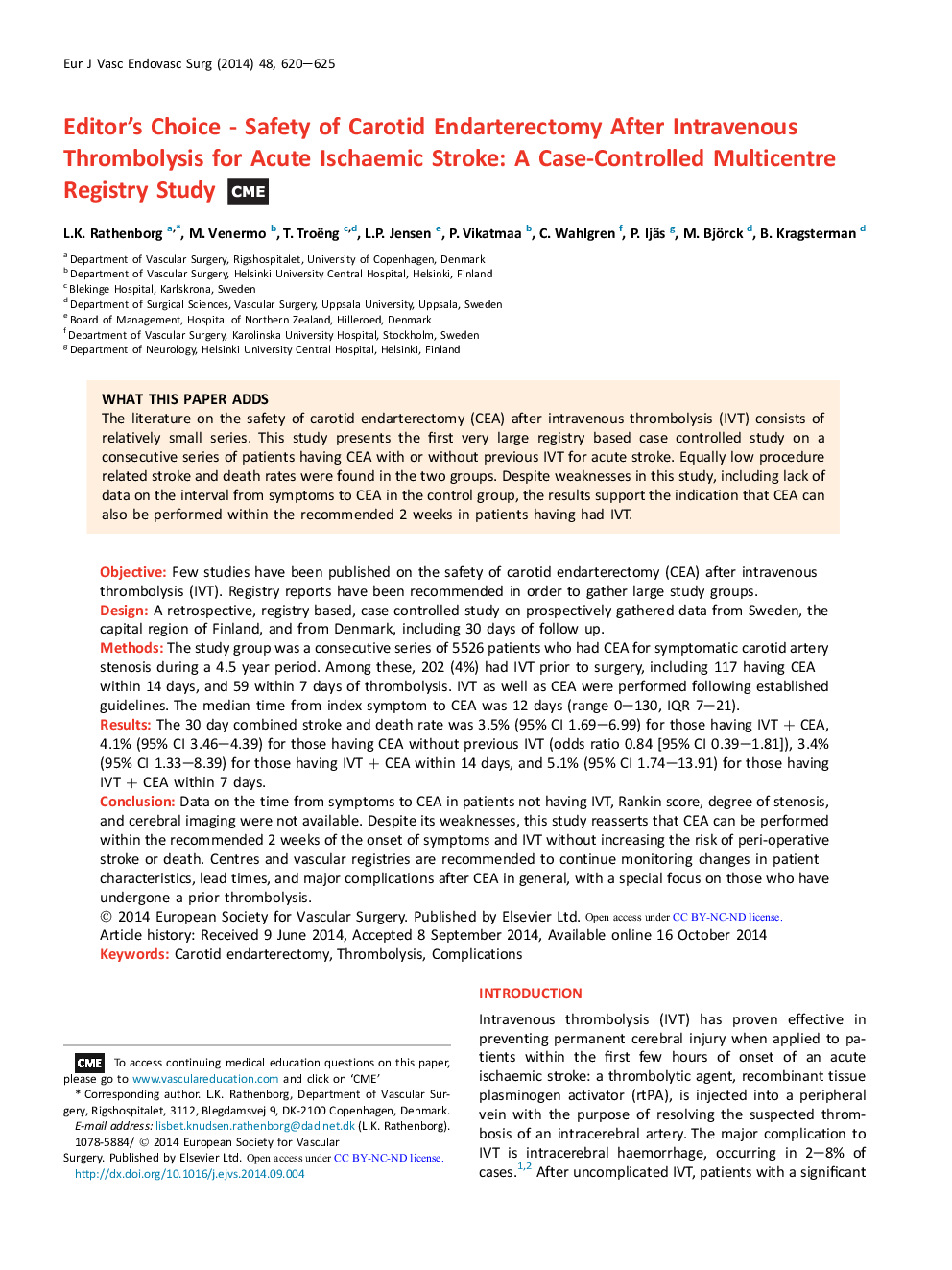| Article ID | Journal | Published Year | Pages | File Type |
|---|---|---|---|---|
| 5957749 | European Journal of Vascular and Endovascular Surgery | 2014 | 6 Pages |
ObjectiveFew studies have been published on the safety of carotid endarterectomy (CEA) after intravenous thrombolysis (IVT). Registry reports have been recommended in order to gather large study groups.DesignA retrospective, registry based, case controlled study on prospectively gathered data from Sweden, the capital region of Finland, and from Denmark, including 30 days of follow up.MethodsThe study group was a consecutive series of 5526 patients who had CEA for symptomatic carotid artery stenosis during a 4.5 year period. Among these, 202 (4%) had IVT prior to surgery, including 117 having CEA within 14 days, and 59 within 7 days of thrombolysis. IVT as well as CEA were performed following established guidelines. The median time from index symptom to CEA was 12 days (range 0-130, IQR 7-21).ResultsThe 30 day combined stroke and death rate was 3.5% (95% CI 1.69-6.99) for those having IVTÂ +Â CEA, 4.1% (95% CI 3.46-4.39) for those having CEA without previous IVT (odds ratio 0.84 [95% CI 0.39-1.81]), 3.4% (95% CI 1.33-8.39) for those having IVTÂ +Â CEA within 14 days, and 5.1% (95% CI 1.74-13.91) for those having IVTÂ +Â CEA within 7 days.ConclusionData on the time from symptoms to CEA in patients not having IVT, Rankin score, degree of stenosis, and cerebral imaging were not available. Despite its weaknesses, this study reasserts that CEA can be performed within the recommended 2 weeks of the onset of symptoms and IVT without increasing the risk of peri-operative stroke or death. Centres and vascular registries are recommended to continue monitoring changes in patient characteristics, lead times, and major complications after CEA in general, with a special focus on those who have undergone a prior thrombolysis.
